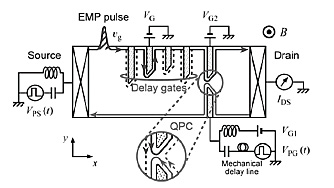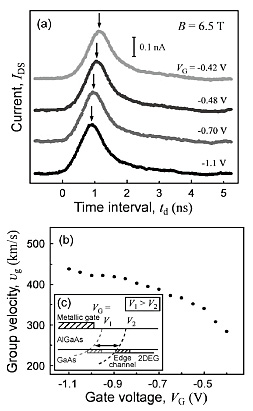1Physical Science Laboratory, 2Tokyo Institute of Technology
When a two-dimensional electron system is subjected to a strong perpendicular
magnetic field, the Lorentz force makes electrons to propagate along the
edge of the sample. In the quantum Hall regime, as the Fermi level in the
sample interior lies in the gap between the energy levels discretized by
the magnetic field, back scattering between channels at opposite edges
is prohibited, which makes these edge channels ideal coherent one dimensional
channels without dissipation. Electronic analogues of quantum optics experiments
using various interferometers defined with edge channels have been demonstrated,
allowing one to study coherent transport properties and quantum statistics
of electrons. These experiments suggest the possibility of using edge channels
as quantum channels, through which quantum states may be transmitted over
a macroscopic distance comparable to the device size. To this end, the
group velocity of electrons is one important physical parameters to be
controlled.
We investigate the group velocity of edge magnetoplasmons (EMPs) in the quantum Hall regime by means of time-of-flight measurement [1]. EMPs generated at t = 0 by applying a voltage pulse to the source electrode propagate along
the sample edge toward the quantum point contact (QPC). By temporarily
opening the QPC at a delay time td with another voltage pulse, we are able to selectively detect EMPs arriving
at a given time delay td as a drain current IDS (Fig. 1). We find that the group velocity of EMPs traveling along the edges defined by a metallic gate strongly depends on the voltage VG on the gate (Fig. 2). The observed variation of the velocity with VG can be understood as reflecting the degree of screening provided by the
metallic gate, which damps the in-plane electric field and hence reduces
the velocity. The degree of screening varies as VG changes the distance between the gate and the edge channel.
[1] H. Kamata, T. Ota, K. Muraki, and T. Fujisawa, Phys. Rev. B 81 (2010) 085329.
 |
 |
|||||
|
|